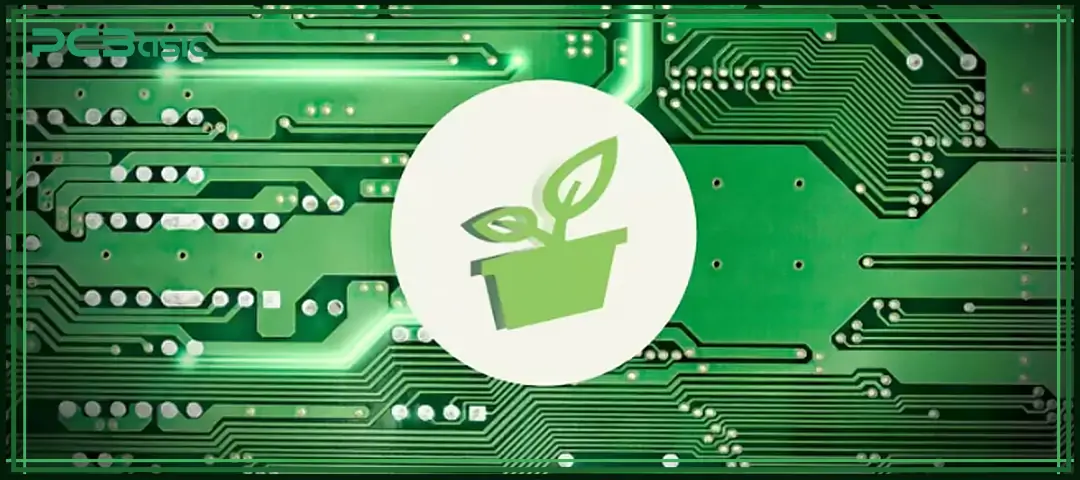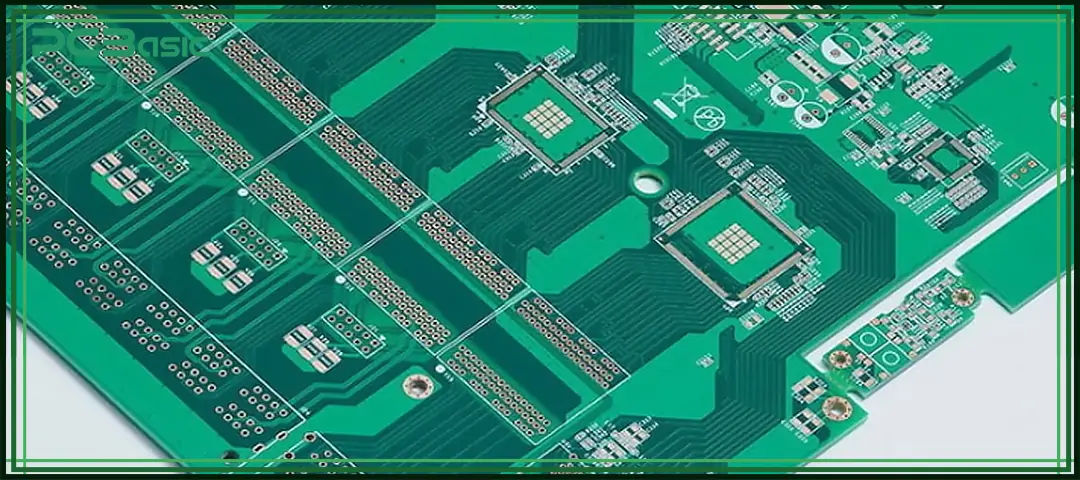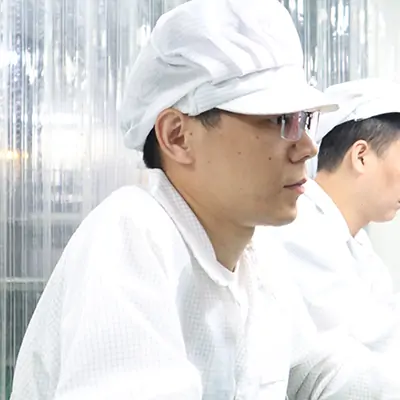Global high-mix volume high-speed PCBA manufacturer
9:00 -18:00, Mon. - Fri. (GMT+8)
9:00 -12:00, Sat. (GMT+8)
(Except Chinese public holidays)
Global high-mix volume high-speed PCBA manufacturer
9:00 -18:00, Mon. - Fri. (GMT+8)
9:00 -12:00, Sat. (GMT+8)
(Except Chinese public holidays)
HomePage > Blog > Knowledge Base > Halogen-Free PCBs
The electronics industry is constantly pursuing safer, more environmentally friendly and more sustainable product designs, and the usage of halogen-free PCBs is rising rapidly. Whether it is automotive electronics, industrial control equipment, or high-speed network communication products, an increasing number of manufacturers are actively discarding traditional halogen-containing flame-retardant materials and instead adopting halogen-free materials. The reason is simple: Halogen-free materials do not release harmful gases at high temperatures, and they are more likely to pass various international environmental protection regulations, and can also enhance the stability and reliability of products during long-term use.
To truly make good use of this type of material, engineers must fully understand the halogen-free meaning, be familiar with the material composition, performance characteristics of halogen-free PCBs, as well as the specific advantages they bring in practical applications.
Based on these demands, this article will conduct a systematic and comprehensive analysis of halogen-free PCB technology, covering core materials, manufacturing and design considerations, performance, and typical application industries, to help readers more clearly understand the importance of halogen-free technology in modern electronic products.

A halogen-free PCB refers to a circuit board made of materials that do not contain chlorine or bromine, or have extremely low amounts of these halogens. The general requirements are:
• Chlorine (Cl) < 900 ppm
• Bromine (Br) < 900 ppm
• Total halogen < 1500 ppm
In traditional PCBs, halogens (especially bromine) are usually added to FR-4 substrates to enhance flame retardancy. However, such halogenated materials will release corrosive, irritating and even toxic gases at high temperatures or when burned, which are harmful to the environment and human health.
So the halogen-free meaning refers to the use of non-halogenated flame retardants for materials such as the substrate of circuit boards, prepregs and copper clad laminates, such as phosphorus-based flame retardant systems or mineral-based flame retardant systems, to achieve flame retardant effects through these methods instead of relying on chlorine or bromine.
It is worth mentioning that even without the use of halogen, halogen-free PCBs can still achieve the UL94 V-0 flame-retardant rating, while avoiding the environmental and health risks brought by halogen-based materials.
The global electronics manufacturing industry is increasingly attaching importance to halogen-free PCBs mainly because the following practical factors are driving changes.
First of all, environmental protection regulations are becoming increasingly strict: Regulations like RoHS, WEEE and national environmental protection rules are all explicitly restricting the use of harmful substances. Therefore, the halogen-free meaning is highly consistent with the trend of environmental protection. It can make electronic products safer, more environmentally friendly throughout their life cycle and more likely to pass compliance audits smoothly.
Secondly, the public's attention to health and safety has significantly increased: Halogen-containing materials will produce dioxins and corrosive gases when exposed to high temperatures or incinerated, all of which are extremely harmful substances to human health and the environment. By using halogen-free PCB materials, these problems can be well avoided, and toxic emissions can be significantly reduced.
Additionally, the requirements for reliability of electronic products are constantly increasing: Nowadays, the performance of devices is getting stronger and stronger, and the requirements for high temperature, heat dissipation and electrical stability are also higher. Halogen-free copper clad laminates perform better in terms of heat resistance, heat dissipation capacity and electrical properties, and are therefore more suitable for high-demand electronic products.
Finally, enterprises' emphasis on sustainable development continues to rise: many international brands are highlighting low-toxicity materials, recyclability and eco-friendly designs. The use of halogen-free PCBs not only helps enterprises achieve these goals but also enhances brand image and makes products more competitive in the market.

Although the demand for halogen-free PCBs is on the rise, engineers still encounter many technical difficulties in the actual production process and need to make trade-offs among materials, processes and costs. The following table compiles some common problems and their corresponding solutions
|
Category |
Challenge Description |
Specific Impact |
Recommended Solutions |
|
1. Different Resin Systems |
Halogen-free materials use phosphorus-based or mineral flame retardants instead of traditional brominated FR-4. |
- Reduced resin flow, making lamination harder to control - Different curing behavior, requiring new temperature profiles - Changes in interlayer adhesion, which may affect reliability |
- Adjust resin flow and curing parameters - Redefine lamination process windows - Strengthen adhesion testing and optimize material matching |
|
2. Higher Material Rigidity |
Inorganic flame retardants significantly increase mechanical strength and overall stiffness. |
- Higher drill wear; requires higher-quality drill bits - Lower lamination flow; needs more accurate pressure control - Possible via reliability issues, requiring improvements in plating and annealing |
- Optimize drilling speed, feed, and withdrawal parameters - Use wear-resistant drill bits - Improve plating, annealing, and hole-wall treatment processes |
|
3. Higher Water Absorption Risk |
Early halogen-free PCB materials had higher moisture absorption; modern phosphorus-based and ceramic-filled types have improved. |
- Moisture can cause delamination, CAF, or popcorning during reflow - Potential impact on electrical performance and long-term reliability |
- Strengthen humidity control during storage - Bake boards before reflow when necessary - Use improved ceramic or phosphorus-based halogen-free systems |
|
4. Higher Manufacturing Cost |
Halogen-free materials are typically 15–30% more expensive and require tighter process control. |
- Requires tougher, more wear-resistant drill bits - Lamination and drilling parameters must be re-optimized - More process monitoring and equipment adjustments |
- Apply precision control in lamination and drilling - Upgrade monitoring systems - Consider reliability and compliance benefits for long-term ROI |
|
Property Category |
Key Characteristics |
Detailed Performance |
Application Value |
|
Electrical Properties |
Improved high-speed & high-frequency performance |
- Lower dielectric constant (Dk) - Lower dissipation factor (Df) - More stable signal transmission at high frequencies |
Ideal for RF, high-speed digital, and 5G applications |
|
Thermal Performance |
Superior thermal stability |
- Higher glass transition temperature (Tg) - Higher decomposition temperature (Td) - Better heat resistance during lead-free reflow |
Suitable for high-temperature environments, lead-free processes, automotive/industrial electronics |
|
Mechanical Strength |
Enhanced structural integrity |
- Increased material rigidity - Better dimensional stability - Stronger interlayer adhesion |
Reduces warpage and improves multilayer PCB stability |
|
Moisture Absorption |
Modern materials achieve low moisture uptake |
- Moisture absorption < 0.15% - High reliability in humid conditions |
Ideal for outdoor devices, industrial equipment, and high-humidity applications |
|
Flame Retardance |
High flame resistance without halogens |
- Meets UL94 V-0 - Complies with IPC flammability standards - Fulfills industry safety requirements |
Prevents toxic halogen emissions while ensuring fire safety |

Time is money in your projects – and PCBasic gets it. PCBasic is a PCB assembly company that delivers fast, flawless results every time. Our comprehensive PCB assembly services include expert engineering support at every step, ensuring top quality in every board. As a leading PCB assembly manufacturer, we provide a one-stop solution that streamlines your supply chain. Partner with our advanced PCB prototype factory for quick turnarounds and superior results you can trust.
A halogen-free PCB contains no chlorine or bromine. Therefore, it can significantly reduce the generation of toxic gases during soldering, high-temperature operation, product recycling or incineration treatment, making the production process safer and the final product more environmentally friendly during use and disposal.
Halogen-free materials typically have higher Tg, better interlayer bonding, and superior thermal stability. This means that halogen-free PCBs are less likely to crack or fail even under multiple thermal cycles, the boards are less likely to delaminate, and the reliability of via holes is higher. For products in automotive electronics, industrial control and other fields that operate for long periods in high-temperature or harsh environments, halogen-free materials can effectively reduce the failure rate and help extend the lifespan of the entire machine.
Another important advantage of a halogen-free PCB lies in its electrical performance. Halogen-free materials have lower dielectric constants and dielectric losses, thus resulting in less signal loss, faster data transmission speed, and more stable frequency consistency. For high-speed digital circuits, RF modules and 5G systems, the use of halogen-free PCBs can significantly enhance signal quality, making high-speed products perform more stably and reliably.
More and more companies are beginning to attach importance to environmental protection regulations, sustainable design and the use of low-toxicity materials. Adopting halogen-free PCBs helps enterprises easily meet global environmental protection requirements, while enhancing the company’s environmental brand image and giving consumers more confidence in the safety and reliability of the products. In a market environment where environmental awareness is constantly rising, halogen-free products are more likely to be recognized and have a greater competitive edge.

|
Application Field |
Key Requirements |
Role of Halogen-Free PCB |
Advantages of Halogen-Free PCB |
|
Automotive Electronics |
High heat resistance, high reliability, low-toxicity materials |
ADAS High-Voltage Battery Management Systems Automotive Lighting Infotainment Systems |
Enhanced Thermal Performance Reduced Failure Rates Higher Reliability In Harsh Operating Conditions Compliance With Automotive Safety And Quality Standards |
|
Consumer Electronics |
Global environmental compliance, lightweight design, stable performance |
Smartphones Tablets Laptops Audio Devices |
Compliance With Global Environmental Regulations Improved Product Safety Stronger Sustainable Brand Image Support For Lightweight And High-Density Designs |
|
Medical Devices |
High material safety, zero toxic emissions |
Diagnostic Equipment Wearable Medical Devices Portable Monitoring Instruments |
Non-Toxic Materials Zero Harmful Emissions Compliance With Strict Medical Safety Standards Higher Reliability In Critical-Life Applications |
|
Telecommunications & Networking |
Low dielectric loss, high thermal stability, excellent high-frequency performance |
Routers Base Stations Network Switches |
Lower Dielectric Loss Higher Thermal Stability Consistent High-Frequency Performance Better Signal Integrity For High-Speed Communications |
|
High-End Computing & Data Centers |
High temperature, high-speed operation, long-term stability |
Servers GPUs High-Performance Computing (HPC) Systems |
Superior Thermal Reliability Better Signal Integrity Under High-Speed Operation Higher Mechanical Stability Longer System Lifespan Under Heavy Loads |
The transition to halogen-free PCBs is not a short-term trend in the industry but an inevitable direction for the development of electronic manufacturing. Only by truly understanding the halogen-free meaning and mastering the characteristics of halogen-free PCBs in terms of electrical, mechanical and thermal performance can engineers design products that are safer, more reliable and more in line with environmental protection requirements.
With superior performance, stronger regulatory compliance, lower toxicity and better sustainability, halogen-free PCBs will continue to play a core role in the next generation of products such as automotive electronics, medical devices, communication networks, consumer electronics and industrial electronics.
As global environmental protection requirements continue to rise, the adoption of halogen-free materials is no longer merely a technological upgrade; it has become a future-oriented and responsible engineering strategy.

Assembly Enquiry
Instant Quote
Phone contact

+86-755-27218592
In addition, we've prepared a Help Center. We recommend checking it before reaching out, as your question and its answer may already be clearly explained there.
Wechat Support

In addition, we've prepared a Help Center. We recommend checking it before reaching out, as your question and its answer may already be clearly explained there.
WhatsApp Support

In addition, we've prepared a Help Center. We recommend checking it before reaching out, as your question and its answer may already be clearly explained there.
